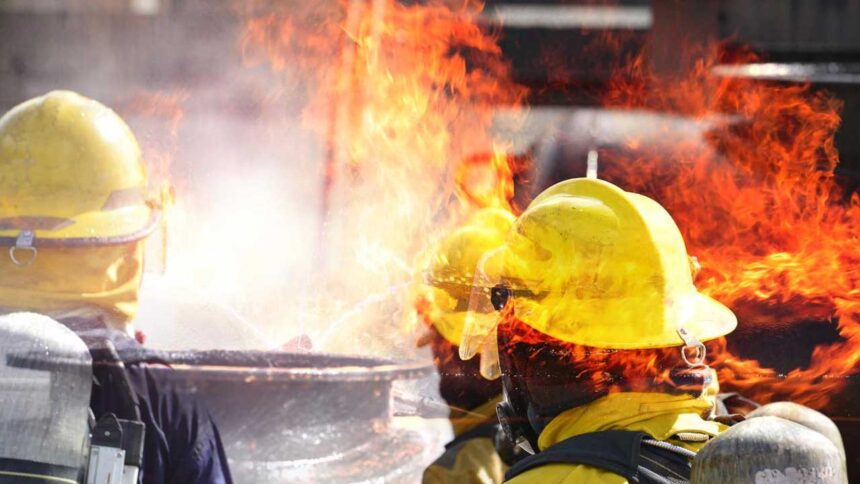You already know how crucial industrial safety is in the plant. We bring you 10 Rules to improve it and thus optimize the achievement of your objectives.
Industrial Safety in the plant is the essential aspect that generates a well-being work environment for the people who work in the process. Those in charge of this area at the plant continue to verify safety conditions to prevent accidents.
Often the work is complicated if you consider the rotation of workers, shortcomings in training, low budgets, and the priorities typically established in production.
The different factors that intervene in the production processes require the head or person in charge of Industrial Safety in the plant to constantly try to keep work accidents and unsafe conditions under control.
How about a technological tool that facilitates the management of Industrial Safety in the plant?
Decalogue for industrial safety in the plant
Indeed you are interested in increasing results in terms of Industrial Safety; we will give you ten standards applicable to industrial safety in the plant.
Rule 1: Watch out for mechanical risks
Mechanical risks appear with using tools and machines that can injure the worker. It is necessary to verify the moving parts and ensure safe conditions for the workstations.
Other aspects to consider are appropriate clothing and PPE, authorization to benefit machines only by trained personnel, installation of guards or safety devices, and maintenance with disconnected equipment. Paying attention to these factors is essential for safety and industrial hygiene.
Also, check the minimum distance between the machines and walls, if possible, use automatic feeding systems, adequate tools, execution of the preventive maintenance program, and good order and cleanliness conditions.
Rule 2: Safety when transporting objects and materials
It is a pervasive operation in the plant, which is why it is one of the significant causes of worker injury.
It would be best to control the maximum loads for men and women. In general, it has been established: 25 kilos for men and 14 kilos for women; however, check the norm of your country because there may be some variations.
Workers who perform this work must receive training on how to avoid musculoskeletal injuries. They must also be equipped with Personal Protection Elements, such as gloves, clothing, and safety shoes.
If you have forklifts or stevedores, these must be operated by authorized personnel and be part of the maintenance program. The load capacity must be visible to guarantee industrial safety .
Rule 3: Promotes order and cleanliness for industrial safety in the plant
Adequate personal hygiene, cleanliness of the uniform and PPE, organization of objects and tools, and hand washing when necessary are actions that reduce risks.
Keeping the workplace tidy, not dumping waste or debris on the floor, cleaning up spills if they happen, and keeping hallways and stairways clear will help maintain a safe and pleasant workspace without skyrocketing safety costs.
Rule 4: Take care of the surfaces inside the plant
The surfaces cause falls, so it is essential to verify that they are in good condition, without holes, loose tiles, obstacles to the passage of people, or mechanical equipment such as forklifts.
If there are processes where humidity is handled, installing drains with the respective grids is necessary. Personnel must wear suitable waterproof footwear.
Rule 5: Monitor location risks and level changes
Plant facilities can generate risks, so inspecting roofs, stairs, elevators, maintenance holes, tanks, and points that may cause falls or detachment of objects is essential.
Proper on-site maintenance, with personnel trained in working at heights and confined spaces, who have been provided with the corresponding PPE and adequate supervision, helps maintain a low indicator of unsafe conditions in the facilities.
Rule 6: Prevent the electrical risk
Electricity is the energy source for most of the equipment and machines used in the plant, making the electrical risk latent. It begins by keeping electrical rooms, and substations closed and neat, with their respective signage and access only to authorized personnel.
Working with electrical hazards on wet floors and using faulty or provisional connections are not recommended. The equipment must connect to a ground pole, and repairs must be carried out by trained and authorized personnel.
The electrical risk must always be signposted. Fuse boxes and control panels must remain closed and identified. If possible, have procedures according to the voltage being worked on.
Rule 7: Seeks to mitigate the risk of fire and explosion
It happens when working with combustible substances, oxidizers, paints, or gases is necessary. Also, when the process requires the use of open flames, such as the application of welding. It is a priority to maintain the regulatory distance between materials and techniques.
According to the case, it is forbidden to smoke, heat closed containers, or use flammable liquids. Open flame equipment may only be used by authorized personnel. A trained brigade and personnel trained in firefighting cannot be missing.
Rule 8: Organize work for more industrial safety in the plant
Accidents are caused mainly by eagerness, stress, or worry. It is essential to organize the work, check the assigned times, avoid rework, and that the worker omits prevention rules to save time.
Worry and stress affect people, causing them to err when operating machines or lifting objects. It also affects interpersonal relationships involving the work environment.
Rule 9: Ensure the training of your brigade and establish general regulations in the plant
Brigade training is vital for Industrial Safety at the plant, monitoring the progress of the brigade members, appointing a suitable brigade chief, and ensuring that the pertinent drills and practices are carried out.
Establish security instructions that must be known by all people, including visitors and contractors, and post them in visible places. You can include, for example:
- Always walk, don’t run.
- Do not obstruct corridors or transit areas.
- Keep the safety area of the fire extinguisher, first aid kit, and stretcher clear.
- Report poor lighting.
- Use the PPE that corresponds to your job position.
- Keep emergency exits in mind.
Rule 10: Train staff and automate the system.
Trained workers facilitate the implementation of safety programs. They are part of the program and reduce your effort to achieve results: focus on training and schedule workouts.
Another thing you can do is install Industrial Security Software in the plant, which integrates the workers to feed it from their jobs, thus speeding up work in the field, inspections, and especially immediate reports.
Take advantage of technology to detect unsafe acts, dangerous conditions, damage to machinery, failures in the facilities, or some other factor that may influence the occurrence of accidents at work. In addition, you avoid written reports with your expenses and errors.
Importance of industrial safety in the plant
Industrial Safety is the area that is in charge of identifying hazards and risk factors, quantifying the severity based on the consequences of a possible work accident and the number of people exposed according to the process.
When we do not give importance to Industrial Safety in the plant, we expose ourselves to accidents that can be fatal, fines, payments to family members, government sanctions, investigations, and affectation of the work environment.
Conclusion
The factors that improve industrial safety in the plant are the knowledge and interest of managers and workers, and by implementing them, they reduce the risk of accidents at work. The training and integration of personnel in Industrial Safety programs facilitate managing and controlling unsafe conditions and acts in the plant. The technology through the Industrial Security Software is a tool that, with a single digitization of the information, captures immediate information and generates reports in real-time.










